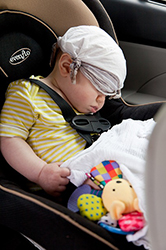 Winter weather still rages strong in many parts of the United States in February, and you must continue to remain vigilant as you promote safety on the construction site.
Winter weather still rages strong in many parts of the United States in February, and you must continue to remain vigilant as you promote safety on the construction site.
Whether you’re a veteran construction worker or new to the industry, follow these winter safety tips.
Track the Weather Forecast
Know the weather forecast so you can decide if it’s safe to work outdoors. Check your local weather center and the National Weather Service for accurate temperature and storm information and predictions.
Wear the Right Gear
Multiple clothing layers can be bulky, yet the right gear also keeps you warm, dry and safe as it protects you from hypothermia or frostbite. Start by wearing layers of clothing that manage moisture, protect you from the cold and shield you from the elements. Then add heavy gloves, a hat and sturdy nonslip shoes for added safety.
Check the Work Site
Every morning, spend a few minutes evaluating the work site for hazards. You may need to remove accumulated ice and snow, trim broken tree branches or set up portable heaters. Remember to spread salt, cat litter or sand on the exposed surfaces, too, as you create a safe job site.
Secure a Warm Break Area
Plan to take your breaks in a warm area as you limit exposure and stay safe. Set up a heated tent or trailer or arrange for another warm indoor area near the job site where you can get warm during your work breaks.
Limit Outdoor Exposure
You may be required to work outdoors when temperatures plummet, winds blow and snow falls, but certain conditions make outdoor work dangerous. Try to work indoors during the worst winter weather, work during the warm parts of the day, break large jobs into small tasks or schedule frequent breaks in warm indoor locations so you can stay safe.
Skip the Coffee
Coffee will keep your hands warm, but it also contains caffeine. This chemical can make your heart rate rise, which gives you a false feeling of warmth and can cause you to take unnecessary risks. Drink water instead of coffee as you stay hydrated.
Know the Signs of Hypothermia and Frostbite
You and all your co-workers should know the signs and symptoms of hypothermia and frostbite, two dangers of outdoor exposure, and the procedure getting medical attention quickly if necessary. Those signs include:
- Prickling skin
- Numbness
- Changes in skin color
- Clumsiness
- Shivering
- Slurred speech
- Weak pulse
- Drowsiness
- Confusion
This winter, take several steps to maintain safety on the construction job site. You should also talk to your insurance agent. Update your liability coverage and learn additional tips that keep you safe all winter.

 The construction industry relies on independent contractors who perform specialized services like plumbing, painting and drywall installation. To prioritize safety on the job site and ensure quality work, consider implementing a drug testing policy for the independent contractors you hire.
The construction industry relies on independent contractors who perform specialized services like plumbing, painting and drywall installation. To prioritize safety on the job site and ensure quality work, consider implementing a drug testing policy for the independent contractors you hire. A project architect or engineer typically carries responsibility for the design of a house, high rise or other structure. However, contractors now also play a role in project design and may be liable if something goes wrong. Consider the benefits of purchasing professional liability insurance and the process for gaining this valuable coverage for your contractor business.
A project architect or engineer typically carries responsibility for the design of a house, high rise or other structure. However, contractors now also play a role in project design and may be liable if something goes wrong. Consider the benefits of purchasing professional liability insurance and the process for gaining this valuable coverage for your contractor business. Safety remains your first priority as a parent. Whether you have one or a dozen kids, follow several car seat safety tips and protect your growing family.
Safety remains your first priority as a parent. Whether you have one or a dozen kids, follow several car seat safety tips and protect your growing family. Winter is almost over, but a variety of risks affect your safety as you drive. This month, perform a maintenance check on your vehicle as you improve safety and reduce
Winter is almost over, but a variety of risks affect your safety as you drive. This month, perform a maintenance check on your vehicle as you improve safety and reduce 
 Coffee, tea, chocolate and energy drinks all contain caffeine. Unfortunately, the caffeine you consume each day affects your health in a negative way. Change your habits and switch to caffeine alternatives as you get your energy boost and improve your health.
Coffee, tea, chocolate and energy drinks all contain caffeine. Unfortunately, the caffeine you consume each day affects your health in a negative way. Change your habits and switch to caffeine alternatives as you get your energy boost and improve your health.
 As a human resources professional, you help your company prepare to onboard new employees. When that new employee is the CEO, you may receive questions from employees who worry about their job security or potential changes to the company culture. Use these tips as you reassure your employees.
As a human resources professional, you help your company prepare to onboard new employees. When that new employee is the CEO, you may receive questions from employees who worry about their job security or potential changes to the company culture. Use these tips as you reassure your employees. Racism occurs when anyone expresses bias verbally, in writing or via behavior or attitude toward someone of a different skin color or ethnicity. Overt racism, including slurs, jokes and name calling, and
Racism occurs when anyone expresses bias verbally, in writing or via behavior or attitude toward someone of a different skin color or ethnicity. Overt racism, including slurs, jokes and name calling, and 



